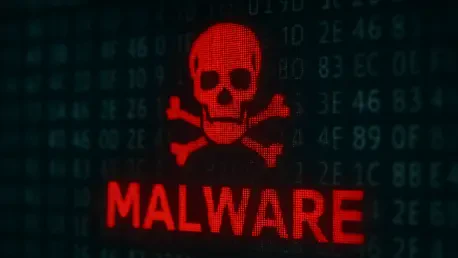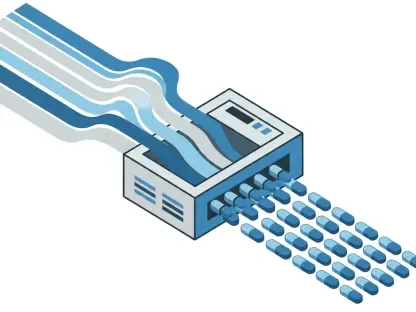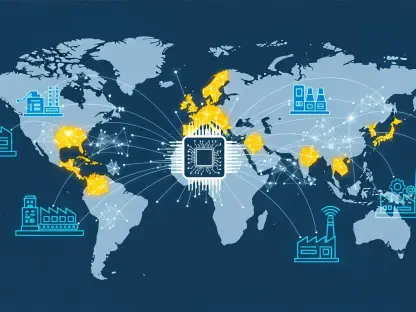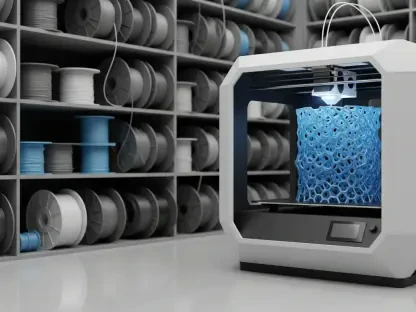In an era where cyber threats are evolving at an alarming pace, industrial systems face a particularly insidious danger that goes beyond the well-known perils of ransomware and data theft, with wiper malware emerging as a critical concern. Wiper malware, a destructive form of malicious software designed to erase data and render systems inoperable, has become a significant threat to manufacturers and critical infrastructure operators. Unlike traditional cyberattacks that aim for financial gain through extortion, wiper malware seeks pure destruction, leaving no room for recovery or negotiation. This devastating tool has been increasingly deployed against industrial environments, where the stakes of uptime and system integrity are extraordinarily high. As state-sponsored actors and cybercriminals alike adopt this weapon, the potential for catastrophic disruption grows, threatening not just financial losses but also operational stability and safety. Understanding and countering this menace is becoming an urgent priority for industries worldwide, as the consequences of inaction could be irreparable.
1. Unveiling the Nature of Wiper Malware
Wiper malware represents a chilling shift in the landscape of cyber threats, distinguished by its singular focus on destruction rather than profit. This type of malicious software is engineered to permanently delete or corrupt data, often targeting critical system components like the master boot record (MBR) or entire storage volumes. The result is systems that are rendered unbootable and data that becomes irretrievable, with no ransom demand to offer a glimmer of hope. In industrial settings, where operational continuity is paramount, such attacks can halt production lines and compromise safety protocols. Historically, notable incidents like the 2012 Shamoon attack, which wiped out over 30,000 computers at a major energy company, and the 2017 NotPetya outbreak, which caused billions in global damages, highlight the devastating potential of wipers. These events underscore how a single attack can spiral beyond its intended target, affecting industries and economies on a massive scale.
The motivations behind wiper malware are as varied as they are destructive, often tied to geopolitical tensions or criminal intent. State-sponsored attackers frequently deploy wipers as tools of sabotage, aiming to cripple infrastructure as a form of retaliation or strategic disruption. Meanwhile, cybercriminals have begun integrating wiper capabilities into their arsenals, using them to punish non-paying victims or erase evidence of their activities. In recent times, ransomware groups have adapted by adding “wipe mode” features, transforming extortion tools into instruments of outright destruction. This evolution marks a dangerous trend where the line between financial crime and cyber warfare blurs. As these threats proliferate, industrial operators must recognize that wiper malware is not a distant risk but a present danger, capable of undermining the very foundations of their operations with little warning or chance for mitigation.
2. Escalation of Threats in Industrial Environments
In the current landscape, wiper malware has surged as a formidable threat to industrial systems, with a notable uptick in sophisticated attacks targeting critical infrastructure. Reports from the first half of this year reveal the emergence of new Iranian-linked malware families such as BlueWipe, SewerGoo, and BeepFreeze, specifically aimed at disrupting networks in regions like Israel and Albania. Simultaneously, PathWiper has struck Ukrainian critical infrastructure, exploiting legitimate administrative tools to erase drives and necessitate complete system rebuilds. These incidents illustrate a clear escalation in both the frequency and severity of attacks. Additionally, groups like CyberAv3ngers have targeted industrial controllers in sectors such as water, wastewater, and oil and gas worldwide, hinting at preparations for even more destructive wiper-style assaults. The implications for manufacturers, particularly those reliant on aging operational technology (OT) systems, are profound and far-reaching.
The specific impacts of wiper malware in manufacturing environments are uniquely catastrophic due to the interconnected nature of industrial systems. These attacks can wipe data from Windows-based human-machine interfaces (HMIs) and engineering workstations, disable programmable logic controllers (PLCs), and render supervisory control and data acquisition (SCADA) systems inoperable. Such disruptions blind operators to critical processes, destroy essential production logs, and significantly delay recovery efforts. Beyond operational chaos, safety risks emerge when automation failsafes are compromised, potentially endangering workers and facilities. Whether deployed by state actors for geopolitical sabotage or by ransomware operators as punishment in double extortion schemes, the strategic objective remains consistent: total destruction of data, systems, and operational trust. Industrial entities must brace for these threats as deliberate acts of disruption rather than mere byproducts of cybercrime.
3. Defensive Strategies Against Wiper Malware
Protecting industrial systems from wiper malware demands a multi-layered approach, as no single solution can fully eliminate the risk of such destructive attacks. Network segmentation stands as a foundational step, requiring the separation of operational technology (OT) from information technology (IT) networks using robust firewalls and strict access controls to prevent lateral movement by attackers. Secure, offsite backups are equally critical, ideally stored on immutable systems and tested regularly for restoration readiness, with credentials isolated to avoid compromise. Endpoint Detection and Response (EDR) tools can help identify suspicious activities like mass file deletions or MBR tampering, though reliance on them alone is insufficient since attackers often bypass such defenses. A combination of these measures, alongside continuous monitoring and log retention in tamper-resistant systems, forms a stronger barrier against the devastating effects of wiper malware in industrial contexts.
Beyond technical safeguards, preparedness and vigilance are vital components of a comprehensive defense strategy against wiper malware. Developing a detailed incident response plan tailored for destructive attacks ensures swift action to isolate infected systems, initiate recovery from backups, and notify relevant stakeholders, including law enforcement or insurers. Hardening OT assets through least privilege principles, disabling unused services, and securing engineering workstations further reduces vulnerabilities. Scrutinizing third-party vendor access is also essential, as attackers increasingly exploit supply chain connections to deliver malware. Staying informed through threat intelligence monitoring allows organizations to track indicators of known wiper campaigns and adapt controls based on evolving geopolitical risks. By integrating these proactive steps, industrial operators can significantly mitigate the existential threat posed by wiper malware, safeguarding both operations and reputation from irreparable harm.
4. Safeguarding the Future of Industrial Operations
Reflecting on the havoc wreaked by wiper malware, it has become evident that this form of cyber threat has established itself as a profound challenge for industrial systems. Unlike ransomware, which often leaves a sliver of hope through negotiation, wipers offer no such reprieve, focusing solely on destruction and leaving entire operations in ruins. High-profile attacks over recent years have demonstrated the capacity of these tools to not only disrupt but also dismantle critical infrastructure, with damages spanning financial, operational, and safety domains. Manufacturers and infrastructure operators find themselves grappling with a new reality where the risk is not just theoretical but actively exploited by state-sponsored actors and cybercriminals alike. The lessons from these incidents highlight the urgent need for robust defenses tailored to the unique vulnerabilities of industrial environments, where a single breach could cascade into widespread catastrophe.
Looking ahead, the path to resilience against wiper malware lies in adopting a proactive and holistic approach to cybersecurity. Industrial entities must prioritize the integration of advanced threat intelligence to anticipate and counter emerging attack vectors before they strike. Investing in workforce training to recognize phishing attempts and other entry points used by attackers can serve as a first line of defense. Collaboration with industry peers and government bodies to share insights on evolving tactics, techniques, and procedures (TTPs) will further strengthen collective security. Additionally, regular audits of backup and recovery processes ensure that systems can be restored swiftly after an attack. By viewing wiper malware as a core risk rather than a rare anomaly, and by committing to continuous improvement in protective measures, industrial operators can build a fortified stance against future disruptions, preserving both operational integrity and public trust in their systems.









